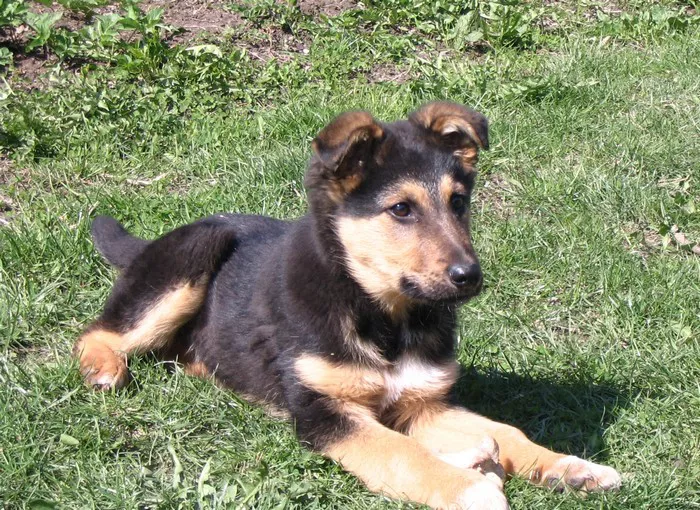Clipping your German Shepherd‘s nails is a crucial aspect of their overall grooming and health care. Proper nail maintenance helps prevent discomfort, injury, and potential health issues. In this guide, we’ll walk you through the steps to safely and effectively clip your German Shepherd’s nails.
Understanding the Importance of Nail Clipping
Clipping your dog‘s nails is more than just a cosmetic task. Overgrown nails can cause several problems:
Pain and Discomfort: Long nails can cause pain when walking or running.
Injury Risk: Overgrown nails are more likely to break or split.
Joint Issues: Long nails can affect your dog’s gait, leading to joint problems.
Infections: Broken nails can lead to infections if not properly managed.
Regular nail clipping helps prevent these issues and keeps your German Shepherd comfortable and healthy.
Tools You Will Need
Before starting, gather the necessary tools for nail clipping:
Dog Nail Clippers: Guillotine-style or scissor-style clippers designed for large dogs.
Styptic Powder: To stop bleeding in case of accidental cuts.
Nail File or Grinder: For smoothing rough edges.
Treats: To reward your dog and keep them calm.
Preparing Your German Shepherd
Get Your Dog Comfortable
Make sure your German Shepherd is calm and comfortable before you begin. Choose a quiet space and have all your tools within reach. You can use treats to keep your dog relaxed and cooperative.
Familiarize Your Dog with the Tools
Let your dog sniff and see the clippers before you start. This helps reduce anxiety. You can also practice holding their paws and touching their nails with the clippers without cutting.
Inspect the Nails
Check your dog’s nails for any signs of injury or infection. Look for the quick, the sensitive part of the nail containing blood vessels and nerves. The quick is usually visible as a pinkish area within the nail. Avoid cutting into the quick, as it will cause pain and bleeding.
Clipping the Nails
Positioning Your Dog
Have your dog sit or lie down in a comfortable position. You can also have someone help hold your dog if necessary. Make sure you have good visibility of the nails and quick.
Clipping Process
Hold the Paw Steady: Gently hold your dog’s paw and isolate the nail you are going to clip.
Clip at an Angle: Hold the clippers at a 45-degree angle to the nail. This helps avoid splitting the nail.
Make Small Cuts: Trim a small part of the nail at a time. This reduces the risk of cutting into the quick.
Check for the Quick: After each cut, check for the quick. Stop cutting if you see a pinkish area near the cut edge.
Dealing with the Quick
If you accidentally cut into the quick and it starts to bleed, don’t panic. Apply styptic powder to the affected nail to stop the bleeding. Hold the paw gently until the bleeding stops.
Smoothing the Edges
After clipping, use a nail file or grinder to smooth the rough edges of the nails. This prevents your dog from snagging their nails on surfaces and helps maintain their comfort.
Post-Clipping Care
Reward Your Dog
Always reward your German Shepherd with treats and praise after clipping their nails. This helps create a positive association with the process and makes future clippings easier.
Inspect the Paws
After clipping, check your dog’s paws for any signs of irritation or injury. Make sure the nails are not too short and that your dog is comfortable.
Establishing a Routine
Regular Clipping Schedule
Aim to clip your German Shepherd’s nails every 3-4 weeks. Regular maintenance keeps the nails at a healthy length and prevents overgrowth.
Monitor Nail Growth
Keep an eye on the length of your dog’s nails between clippings. If you hear clicking sounds when your dog walks on hard surfaces, it’s time for a trim.
Common Mistakes to Avoid
Cutting Too Much: Avoid cutting large portions of the nail at once. This increases the risk of hitting the quick.
Neglecting the Quick: Always be mindful of the quick’s location to prevent pain and bleeding.
Skipping Regular Trims: Irregular nail trimming can lead to overgrown nails and associated problems.
Using Improper Tools: Use clippers designed for large dogs to ensure a clean and safe cut.
Forgetting to Smooth Edges: Rough edges can cause discomfort and snagging. Always smooth the nails after clipping.
Dealing with Anxiety
Desensitization
If your German Shepherd is anxious about nail clipping, take time to desensitize them. Start by touching their paws regularly and rewarding them for staying calm. Gradually introduce the clippers and perform mock clipping sessions without actually cutting the nails.
Professional Help
If you are uncomfortable clipping your dog’s nails or if your dog is extremely anxious, consider seeking help from a professional groomer or veterinarian. They have the expertise and experience to handle nail clipping safely.
Health Benefits of Regular Nail Clipping
Regular nail clipping provides several health benefits for your German Shepherd:
Prevents Pain: Keeps nails at a comfortable length, reducing pain while walking.
Reduces Injury Risk: Prevents nails from breaking or splitting.
Promotes Healthy Gait: Maintains a natural gait, reducing stress on joints.
Enhances Hygiene: Reduces the risk of infections from broken nails.
See also: How to Cut a Miniature Schnauzer’s Hair
Conclusion
Clipping your German Shepherd’s nails is an essential part of their grooming routine. With the right tools, techniques, and regular practice, you can keep your dog’s nails at a healthy length and prevent discomfort and injury. Remember to be patient and gentle, making the experience as positive as possible for your furry friend. By following this comprehensive guide, you’ll ensure your German Shepherd’s nails are well-maintained, contributing to their overall health and well-being.


